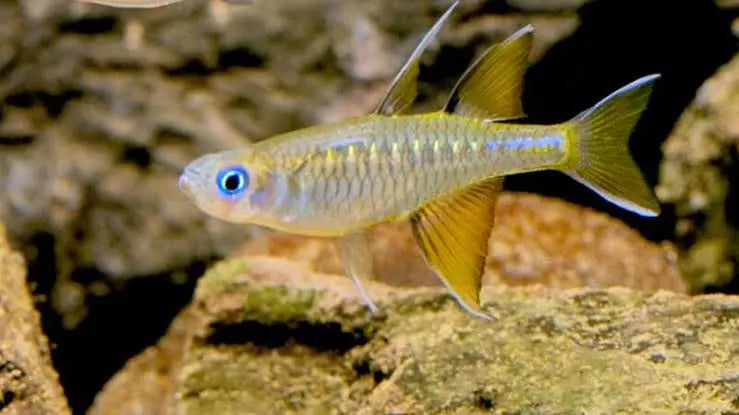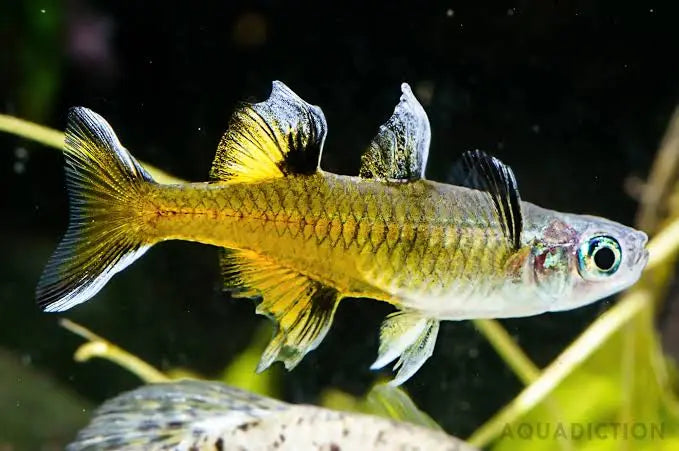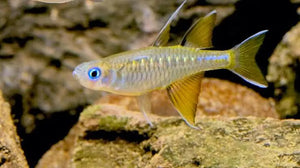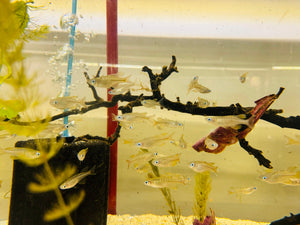Rare - Northern Pacific Blue Eyes 6cm
Guarantee Safe Checkout
Species Summary
Dark background and substrate choices will help to bring out the colours of these active fish. Filtration should be efficient, and the water well-oxygenated, but the flow should not be too strong. Always maintain Pacific Blue-eyes in groups of 10 or more specimens, ideally with one or two females to every male
They feed on mosquito larve and can tolerate water temperature from 10°c - 28°c and are pond dweller friendly like frogs. As the name suggests, the fish's eyes are a beautiful luminescent blue. A Pacific Blue-eyes are carnivorous fish, particularly suited for garden ponds and aquariums. Size: Commonly 5-6cm.
The North and South Pacific blue-eyes are small, schooling fish in the family Pseudomugilidae, known for their iridescent blue eyes and active swimming behavior. The most well-known species in this group are:
Northern Pacific Blue-Eyes (e.g., Pacific Blue-Eye – Pseudomugil signifer)
• Found along the northern and eastern coasts of Australia (from Queensland to northern New South Wales) and in New Guinea.
• Prefer warmer, tropical to subtropical waters.
• Can tolerate both freshwater and brackish conditions, often found in coastal streams, estuaries, and mangroves.
• Males develop longer, more elaborate fins during breeding.
Southern Pacific Blue-Eyes (Southern populations of Pseudomugil signifer)
• Found in southern New South Wales and Victoria.
• Live in cooler, temperate waters, usually in freshwater rivers, streams, and estuaries.
• Slightly more cold-tolerant than their northern counterparts.
• Generally, their fins are less elongated compared to northern populations.
Key Differences
1. Geographic Range: Northern populations live in warm waters, while southern ones inhabit cooler regions.
2. Temperature Tolerance: Northern types prefer tropical conditions, whereas southern populations can handle lower temperatures.
3. Fin Development: Males in the north tend to have more pronounced fin extensions.
Despite these differences, they belong to the same species (Pseudomugil signifer), but northern and southern populations have adapted to their respective environments.
Limited Quantity Available - Will Sell out Fast!
What to Expect from Us
All Aquatic plants and animals come with a 100% live arrival guarantee!!
Note:
We can’t ship Livestock and Live Plants to WA and TAS due to State Restrictions. Kindly check out our DOA and other policies before purchase!!

| Quantity |
1 fish |
|---|






